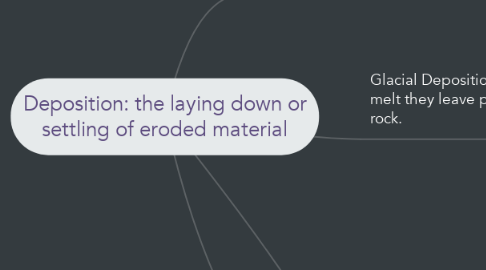Deposition: the laying down or settling of eroded material
von Alyssa Willis


1. Deposition by mass wasting: The erosion that takes place during mass wasting continues to occur if gravity is still the ultimate force holding the rock and soil in place. Once the rock and soil find a steady place to land such as the bottom of a mountain it can be deposited and a Talus is created.
1.1. Talus:is a pile of angular rocks and sediment from a rockfall deposited at the base of a slope.
2. Water Deposition: There are 3 types of water deposition along streams, coastlines, and in the ground. Also known as groundwater deposition.
2.1. Groundwater Deposition: This creates structures within caves. Stalactites and Stalagmites are features of dripping water that is deposited in minerals.
2.1.1. Stalacties: iceicle like structure that hangs from the ceiling of the cave.
2.1.1.1. Stamlagmites: build on the cave floor
2.2. Deposition by stream: When the speed of the water is decreased there will always be deposition happening. The slow water deposits sediment in meanders. When the water reaches flat land it creates a delta.
2.2.1. Delta:is a large deposit of sediment which forms when streams enter large bodies of water.
2.3. Deposition along coastlines: Longshore currents carry sand along ocean coasts and eventually the sand is deposited when the slower currents have less energy. This is why much sand on ocean beaches was originally deposited from rivers.
3. Wind Deposition: Two common types of windblown deposits are Dunes and Loess.
3.1. Dunes: Piles of windblown sand
3.1.1. Loess: A crumbly windblown deposit of silt and clay

